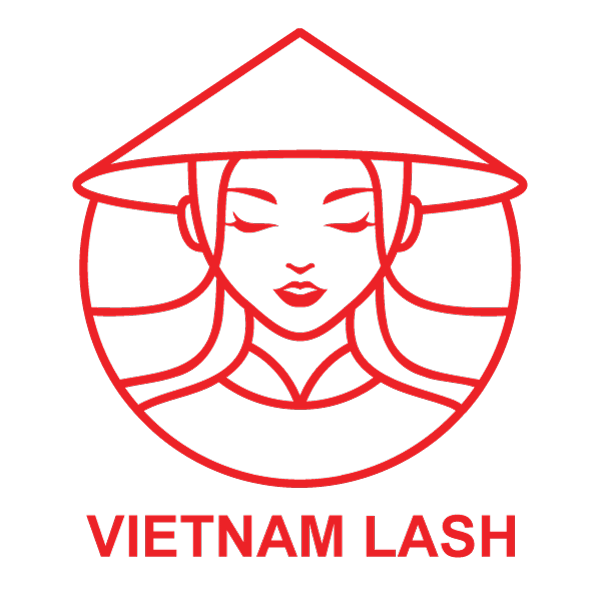As a dedicated lash technician, you understand the pivotal role that lash extension glue plays in creating stunning, long-lasting lash enhancements for your clients. However, navigating the world of lash adhesives can be daunting with their myriad of options, specifications, and techniques. Fear not! This comprehensive guide is designed to equip you with everything you need to know about lash extension glue, from its composition and types to storage, application, and troubleshooting. Let’s dive in!
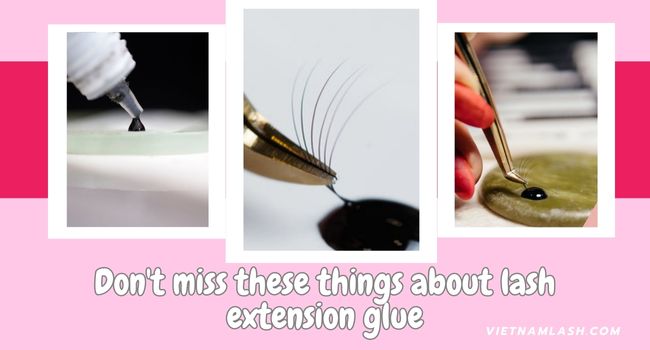
Understanding Lash Extension Glue
Lash extension glue, also known as adhesive, is the secret ingredient that binds synthetic lashes to natural lashes, creating the desired length, volume, and curl. It typically contains cyanoacrylate, a fast-drying adhesive that polymerizes when it comes into contact with moisture, creating a strong and durable bond.
What are the common ingredients in lash extension glue?
The first thing I want everyone to understand is the nature of lash extension glue. It is a chemical compound. Most conventional lash extension adhesives typically have three main components: cyanoacrylate, polymethyl methacrylate, and hydroquinone. I’ve researched these chemical components and summarized them in the simplest and most understandable way for everyone. So, let’s take a look at what role these three components play in lash extension glue, shall we?
The most important ingredients is Cyanoacrylate
“Cyanoacrylate” is a primary chemical compound in eyelash extension glue. Cyanoacrylate is a type of fast-drying, strong adhesive based on acrylic, commonly used in the application of fake eyelashes and various medical applications. When cyanoacrylate comes into contact with moisture in the air, it quickly solidifies and forms a strong bond between the fake eyelash fibers and the natural eyelashes.
Cyanoacrylate is the most important ingredient in eyelash extension glue. It helps the glue to dry and adhere strongly to the natural lashes.
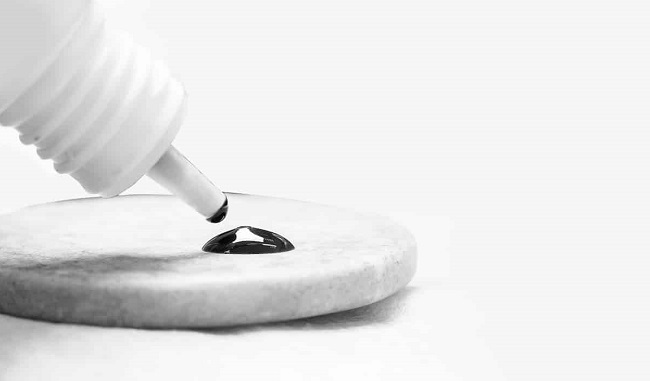
In the beauty and fake eyelash extension fields, cyanoacrylate is utilized to create durability and strong adhesion, allowing fake eyelashes to be securely attached and maintained for an extended period without the need for heat bonding or excessive lash adhesive. However, it is essential to use cyanoacrylate carefully and follow instructions to ensure safety for both the eyes and skin.
There are several types of cyanoacrylate used in lash extension glue. Four of the most common ones include ethyl cyanoacrylate, butyl cyanoacrylate, ethoxyethyl cyanoacrylate, and alkoxy cyanoacrylate. Ethyl cyanoacrylate is the component found in most glue types. It has the fastest drying time and the strongest bonding capability. When glues use this component, eyelash extensions adhere firmly and last longer. However, the downside of using this type of glue is that it can be relatively hazardous to the eyes, as the risk of irritation is relatively high.
The next most common type of cyanoacrylate is butyl cyanoacrylate. One advantage of this type is that it doesn’t produce as much fume or odor when used extensively. The risk of skin irritation from glues containing this compound is also lower compared to those containing ethyl cyanoacrylate. However, the downside is that it takes longer to dry, and its bonding strength on natural lashes is relatively lower.
The remaining two types of cyanoacrylate are ethoxyethyl cyanoacrylate and alkoxy cyanoacrylate. These two types share the common characteristic of having a lower risk of causing skin irritation, but they both have longer drying times and weaker bonding properties. Lash extension glue containing alkoxycyanoacrylate is relatively expensive compared to the other three types.
Methanol is also a must-have ingredient
Methanol is a type of alcohol. In glue for eyelash extensions, methanol functions as a solvent to dissolve cyanoacrylate molecules. Thanks to the action of methanol, when using the adhesive, the particles of the lash fibers break down more easily, aiding in better adhesion to the surface of the natural eyelashes.
Additionally, methanol has a special property. When it comes into contact with the humidity in the air and the natural humidity of your eyelash fibers, it locks in moisture and accelerates the bonding process. This allows the eyelash extension bonding process to occur more quickly and effectively, resulting in long-lasting results.
Polymer is necessary
So far, I’ve discussed two components that help glue eyelash extensions to your false lashes. But I haven’t mentioned where the adhesive quality of eyelash extension glue comes from, have I?
Do you think it’s a common characteristic of most glue types to have that stickiness? Well, it comes from polymers. Polymers are a chemical substance that thickens your liquid solution. Adding them to the composition of various glue types helps enhance adhesion. They create thickness and smoothness in the glue, making it easier for lash technicians to control the amount of glue needed.
However, there are still glue types that don’t contain this polymer component. Most of those glues are cheaper, but that also means they may have weaker adhesion, which can lead to premature lash breakage.
>> The Best Lash Glue Of 2023 – A Guide To Choose
Two different types of eyelash extension glue
Two types of lash extension glue. Black eyelash adhesive dries faster than clear adhesive, while the clear adhesive can last longer.
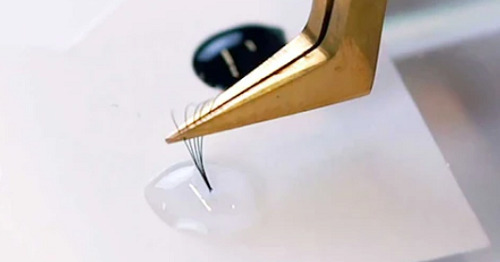
Speaking of eyelash extension glue, I will discuss the two main types. The first one is black adhesive glue, and the second one is clear adhesive glue. Black adhesive glue is suitable for individuals with dark-colored natural lashes.
This is because the color of the glue blends into the natural and extension lashes, maintaining a natural appearance. On the other hand, clear adhesive glue can be used for all lash types, but it works best with lighter-colored lashes. Individuals with fine and delicate natural lashes should also opt for clear adhesive to prevent any visible attachment points for the eyelash extensions. Another advantage of clear adhesive glue is its durability over time. If applied by a skilled lash technician, eyelash extensions can last up to 8 weeks.
Now, you might wonder why some people still use black adhesive glue, right? In fact, it also has its advantages. Black eyelash adhesive dries faster than clear adhesive. Clear adhesive glue has a longer drying time, which can be a drawback in terms of time management for both lash technicians and clients.
>> Clear or black lash glue – Which one is perfect for you?
>> The perfect eyelash glue for sensitive eyes: A comprehensive guide
Interaction between environmental factors and eyelash extension glue
Because lash extension glue contains components that can interact with moisture, such as methanol or cyanoacrylate, it’s evident that environmental factors can affect your glue. Here, I will discuss two factors: humidity and temperature.
1. Humidity and the reaction of the lash extension glue
Ideal humidity in salon condition. The values usually fall within the range of 45% to 70%. The higher the humidity, the faster the adhesive dries.
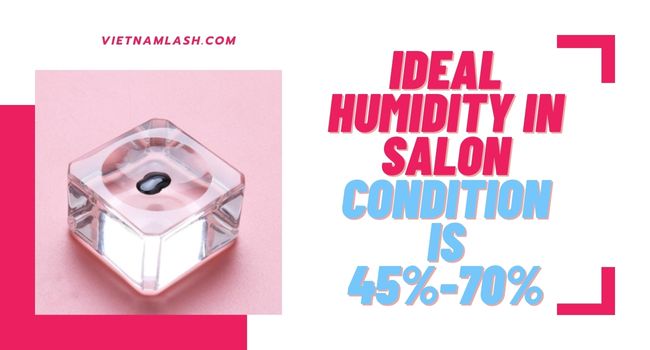
In the composition of eyelash extension glue, cyanoacrylate only exhibits its characteristic of drying and bonding when it absorbs moisture from the air. In other words, it is activated only when it interacts with atmospheric humidity. Therefore, humidity plays a significant role in the drying time and longevity of lash extensions.
Manufacturers of eyelash extension adhesives typically provide technical specifications for the ideal humidity for each type of glue. These values usually fall within the range of 45% to 70%. The higher the humidity, the faster the adhesive dries, which also reduces the risk of eye irritation due to the glue. Conversely, lower humidity levels result in slower drying times.
However, it’s essential to pay attention to the upper limit of this parameter. While high humidity leads to quicker drying and better adhesion of lash extensions, if it exceeds the recommended limit (typically around 70%), it can slow down the drying process.
2. Temperature also affect the glue for lash extension
Besides humidity, temperature also affects eyelash extension glue. In essence, adhesive manufacturers specify the operating range of eyelash extension glue from -50°C to 60°C.
However, the most suitable temperature range for optimal glue performance is typically between 22-26°C. Within this temperature range, the glue’s viscosity remains consistent, and the drying time is faster. If the temperature is higher, the glue’s viscosity becomes thinner. Although this leads to faster drying, it can make it challenging for lash technicians to apply an even amount of glue, potentially causing clumping and premature lash breakage.
Conversely, at lower temperatures, the glue’s viscosity increases, resulting in longer drying times.
>> Unlock the Mystery: How Long Does Lash Glue Last?
How to store eyelash extension glue
If you’re a lash technician, you’ve probably used a bottle of lash extension glue that didn’t last, and it hardened after a few days of not using it, right? After reading the beginning of this article, you should understand the reason for this, shouldn’t you?
That’s because when you open the glue bottle, it comes into contact with more moisture and air from the environment. Exposure to higher humidity levels activates the adhesive’s drying property. Therefore, just after a few weeks, or even a few days, of opening the cap, your glue bottle may need to be discarded.
So, what’s the best way to preserve eyelash extension glue? Don’t even think about storing it in the fridge. Temperature doesn’t significantly affect the glue’s drying process. The crucial factor here is humidity. If the humidity level exceeds the permissible range, the glue will dry out quickly. The refrigerator only reduces the temperature but doesn’t impact humidity.
The best approach is to seal the glue bottle tightly after use to prevent it from interacting with the air. Additionally, if you have the means, consider investing in a dehumidifier to store your glue properly. This ensures that your glue will remain usable for an extended period of time.
>> Explore instructions for properly storing eyelash glue from experts: How To Store Eyelash Extension Glue?
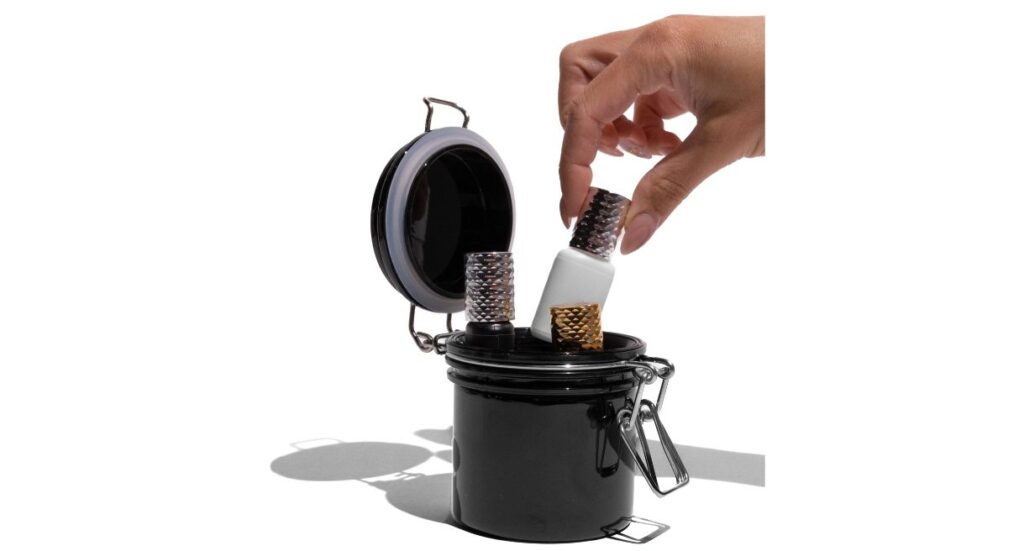
Troubleshooting Common Issues of Lash Extension Glue
Even with meticulous application, lash extension problems may arise. Here’s how to troubleshoot common issues:
- Poor Adhesion: Ensure natural lashes are thoroughly cleansed and free from oil or residue that may hinder adhesion. Additionally, check humidity levels and adjust glue accordingly.
- Premature Lash Shedding: Evaluate the application technique and adhesive consistency. Ensure extensions are properly isolated and bonded to natural lashes without excessive tension.
- Allergic Reactions: If a client experiences adverse reactions, discontinue use immediately and provide appropriate aftercare instructions. Consider switching to a hypoallergenic or sensitive glue formulation for future appointments.
- Lash Stickiness: Excessive adhesive may cause lashes to stick together. Use a microbrush or mascara wand to gently separate the lashes and remove any excess glue.
- Retention Issues: Factors such as oil-based products, excessive moisture, and poor aftercare can impact retention. Educate clients on proper lash care practices and recommend suitable aftercare products to prolong retention.
Conclusion
Mastering the art of lash extension application requires not only talent and creativity but also a deep understanding of lash extension glue and its nuances. By familiarizing yourself with different glue types, proper storage and handling techniques, application methods, and troubleshooting strategies, you’ll elevate your skills as a lash technician and deliver exceptional results for your clients. With the knowledge gained from this guide, you’re well-equipped to navigate the world of lash extension glue with confidence and precision. Happy lashing!
Ready to brush up your lash skills? Visit our website at vietnamlash.com for more lash industry knowledge, tips, and tricks. Expand your expertise and stay ahead in the ever-evolving world of lash extensions. Explore our resources today!
